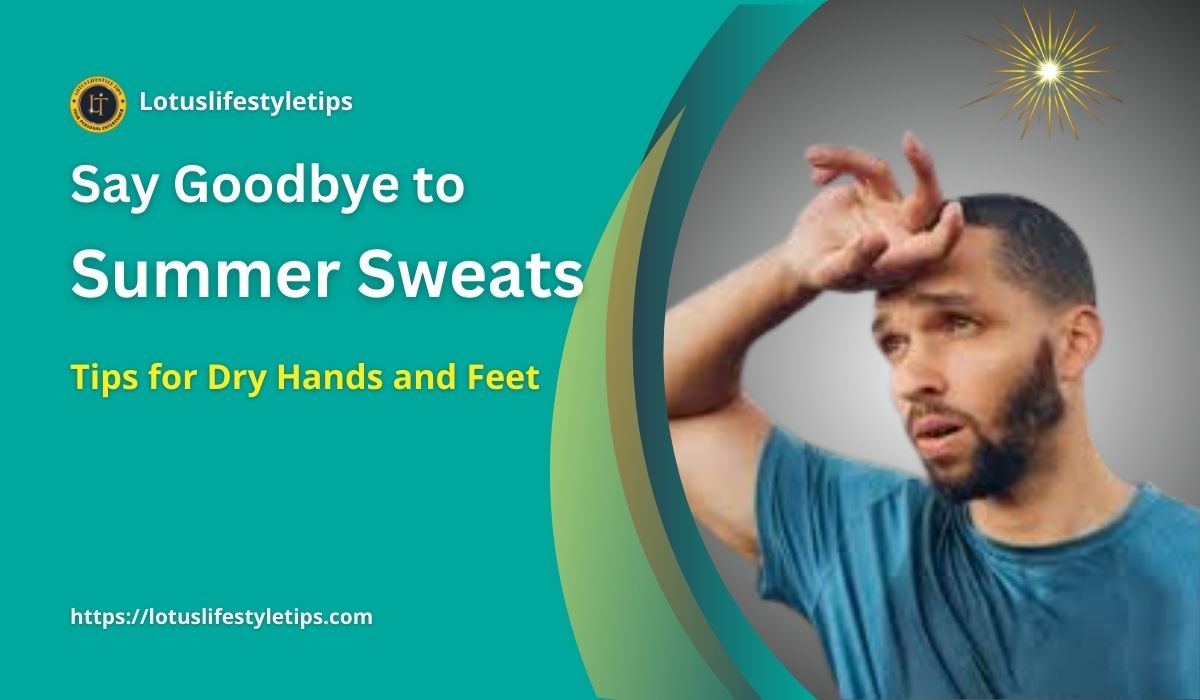Summer can be a challenging time for those who suffer from sweaty hands and feet. Excessive sweating, especially in the warmer months, can lead to discomfort, embarrassment, and even skin problems. This article delves into the causes, symptoms, and effective treatments to help you say goodbye to summer sweats and enjoy dry hands and feet all season long.
Types and Categories
Primary Focal Hyperhidrosis: Primary focal hyperhidrosis is a condition where excessive sweating occurs in specific areas of the body, such as the hands, feet, underarms, and face. It often starts in childhood or adolescence and is usually inherited.
Secondary Generalized Hyperhidrosis: Secondary generalized hyperhidrosis is less common and is caused by an underlying medical condition or medication. Unlike primary hyperhidrosis, it can start at any age and affects larger areas of the body.
Normal Sweating vs. Excessive Sweating
Understanding the difference between normal sweating and hyperhidrosis is crucial. While sweating is a natural and necessary bodily function for regulating temperature, excessive sweating disrupts daily activities and affects quality of life.
Symptoms and Signs
Constant Moisture on Hands and Feet: Individuals with hyperhidrosis experience persistent wetness on their hands and feet, making it difficult to hold objects or walk comfortably.
Clammy Skin: The skin often feels clammy and damp to the touch, which can be particularly noticeable during a handshake or when touching other surfaces.
Discoloration or Odor: Chronic sweating can lead to skin discoloration and unpleasant odors due to bacterial growth in the moist environment.
Impact on Daily Activities: Excessive sweating can interfere with routine tasks such as writing, typing, driving, and even social interactions, leading to significant psychological distress.
Causes and Risk Factors
Genetic Factors: Hyperhidrosis can run in families, suggesting a genetic component to the condition.
Environmental Influences: Heat, humidity, and stress are major triggers that exacerbate sweating episodes.
Lifestyle Choices: Certain lifestyle habits, such as diet and physical activity levels, can influence sweating patterns.
Medical Conditions: Conditions such as thyroid disorders, diabetes, and infections can cause secondary hyperhidrosis.
Diagnosis and Tests
Clinical Evaluation: A thorough clinical evaluation by a healthcare provider is essential for diagnosing hyperhidrosis.
Medical History: Discussing the patient’s medical history helps identify any underlying conditions that may be contributing to excessive sweating.
Laboratory Tests: Blood tests can help rule out other medical issues that might cause hyperhidrosis.
Sweat Tests: Tests like the starch-iodine test and thermoregulatory sweat test measure the amount of sweat produced in various areas of the body.
Treatment Options
- Antiperspirants: Strong antiperspirants containing aluminum chloride are often the first line of defense against excessive sweating.
- Absorbent Powders: Powders designed to absorb moisture can help keep hands and feet dry throughout the day.
Prescription Treatments
- Prescription Antiperspirants: These are stronger than over-the-counter options and are applied before bedtime to reduce sweating.
- Oral Medications: Medications such as anticholinergics can reduce sweating, but may have side effects.
Medical Procedures
- Iontophoresis: This non-invasive procedure uses electrical currents to reduce sweat production.
- Botox Injections: Botox injections block the nerves that trigger sweat glands, providing temporary relief from excessive sweating.
Lifestyle Adjustments
- Dietary Changes: Avoiding spicy foods, caffeine, and alcohol can help reduce sweating.
- Stress Management Techniques: Practices such as yoga, meditation, and deep-breathing exercises can lower stress levels and minimize sweating triggers.
Preventive Measures
- Proper Hygiene Practices: Regular washing and using antibacterial soaps can help prevent infections and reduce odors.
- Wearing Appropriate Clothing: Light, breathable fabrics help wick moisture away from the skin.
- Staying Hydrated: Drinking plenty of water helps regulate body temperature and can reduce sweating.
- Avoiding Trigger Foods and Drinks: Identifying and avoiding foods and beverages that trigger sweating can make a significant difference.
Personal Stories or Case Studies
Real-Life Experiences of Individuals with Hyperhidrosis: Sharing stories of individuals who have struggled with hyperhidrosis and how they managed their symptoms provides hope and practical tips for others.
Success Stories of Managing Summer Sweats: Highlighting successful treatments and lifestyle changes that have helped people achieve dry hands and feet.
Expert Insights
Quotes from Dermatologists: Including expert opinions from dermatologists provides credibility and additional valuable information.
Advice from Medical Professionals: Practical advice from healthcare providers on managing and treating hyperhidrosis.
Conclusion: Summer Sweats.
Summer sweats can be a persistent and frustrating issue, but with the right knowledge and treatment, you can keep your hands and feet dry. By understanding the causes, symptoms, and effective treatments, you can take control and enjoy a more comfortable and confident summer. For more information and personalized advice, consult with a healthcare professional.
Also, Read: Essential Nutrients for Thyroid Health: How to Boost Thyroid Health
Visit: https://lotustechtips.com – Get The Latest Tech Updates
Discover more from Lotus LifestyleTips
Subscribe to get the latest posts sent to your email.


Nice of summer tips
Nice information Keep Up It 🙂